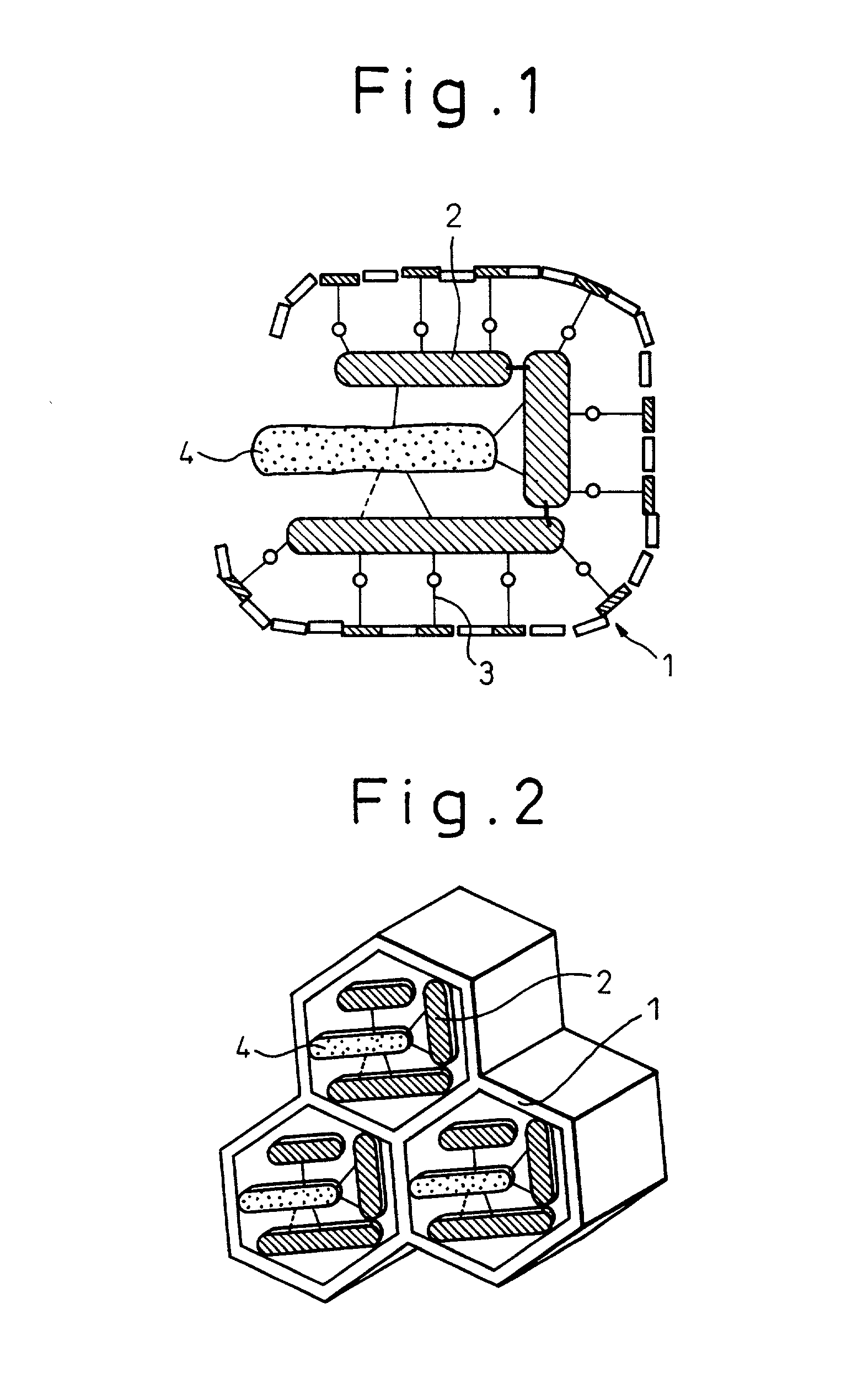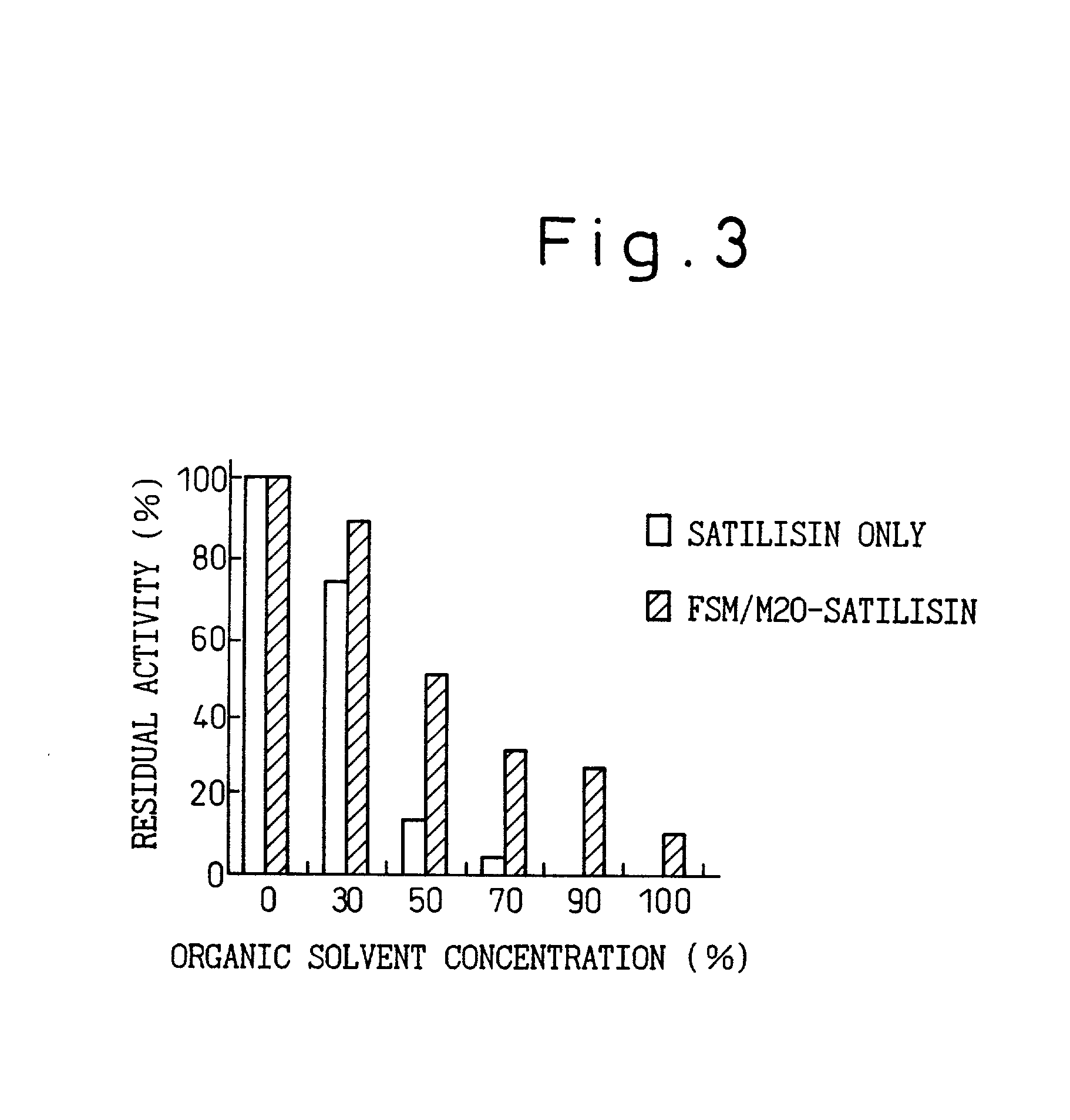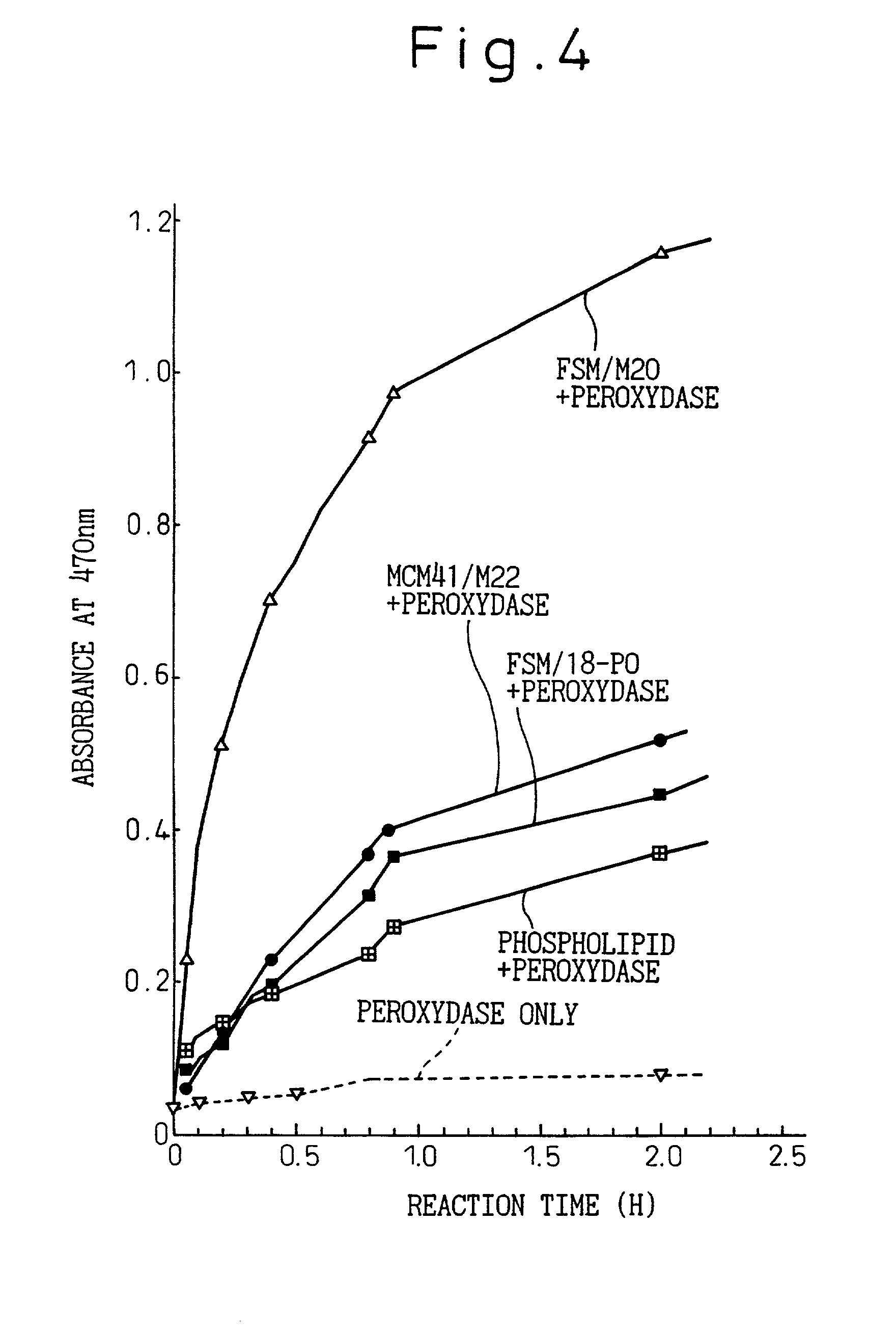Immobilized enzymes
a technology of immobilized enzymes and enzymes, which is applied in the direction of biochemistry apparatus and processes, on/in inorganic carriers, on/in biological cells, etc., can solve the problems of low specificity of reactions, low stability, and prone to side reactions
- Summary
- Abstract
- Description
- Claims
- Application Information
AI Technical Summary
Benefits of technology
Problems solved by technology
Method used
Image
Examples
example 1
Structure 1 of Mesoporous Material (FSM / 8, 10, 12, 14, 16, 18)
[0068] A powdered sodium silicate (SiO.sub.2 / Na.sub.2O=2.00) manufactured by Nippon Chemical Industries Co., Ltd. was calcined in an air at 700.degree. C. for 6 hours to form a crystal of sodium disilicate (delta-Na.sub.2Si.sub.2O.sub.5). 50 g of this crystal was dispersed in 500 cc of water and stirred for 3 hours. Thereafter, the solid content was recovered by filtration to obtain a kanemite crystal as a layered silicate.
[0069] Without drying this kanemite, 50 g (dry basis) of kanemite was dispersed in 1000 ml of an aqueous 0.1 M solution of hexadecyltrimethylarmonium chloride [C.sub.16H.sub.33N(CH.sub.3).sub.3Cl] as a surfactant and then heated with stirring at 70.degree. C. for 3 hours. The pH of the dispersion at the initial stage of heating was 12.3. Then, the pH of the dispersion was lowered to 8.5 by adding 2N hydrochloric acid with heating / stirring at 70.degree. C. Furthermore, the dispersion was heated at 70.deg...
example 2
Structure 2 of Mesoporous Material (FSM / M05, 10, 20)
[0071] Under the same conditions as those of the method for production of the mesoporous material of Example 1, except that mesitylene [C.sub.6H.sub.3(CH.sub.3).sub.3] was added in addition to 0.1 mol of hexadecyltrimethylammonium chloride, a mesoporous material was produced. The production was performed under three conditions of the amount of mesitylene to be added, that is, 0.05 mol, 0.1 mol and 0.2 mol. The resulting mesoporous materials were designated as FSM / M05, FSM / M10 and FSM / M20, respectively.
example 3
[0072] A method of immobilizing subtilisin as a kind of protease in pores of the mesoporous material FSM / M20 (pore diameter=4.7 mm) shown in the production method of Example 2 will be explained. To 100 ml of deionized water in which 1.0 g of subtilisin (manufactured by Sigma Co.) was dissolved, 3 g of a powder of FSM / M20 was added and the solution was slowly stirred up and down at room temperature for about 5 hours. Then, the FSM / M20 powder was isolated by filtration and washed with deionized water. The powder was further dried at room temperature to obtain a mesoporous material powder in which subtilisin had been immobilized.
[0073] Thermogravimetric analysis (TG) of the mesoporous material powder in which subtilisin had been immobilized was carried out. As a result, two weight losses were observed within a range from room temperature to 150.degree. C. and a range from 200 to 500.degree. C. The former weight loss is caused by elimination of adsorbed water and the latter is caused by...
PUM
| Property | Measurement | Unit |
|---|---|---|
| diameter | aaaaa | aaaaa |
| diameter | aaaaa | aaaaa |
| diameter | aaaaa | aaaaa |
Abstract
Description
Claims
Application Information
 Login to View More
Login to View More - R&D
- Intellectual Property
- Life Sciences
- Materials
- Tech Scout
- Unparalleled Data Quality
- Higher Quality Content
- 60% Fewer Hallucinations
Browse by: Latest US Patents, China's latest patents, Technical Efficacy Thesaurus, Application Domain, Technology Topic, Popular Technical Reports.
© 2025 PatSnap. All rights reserved.Legal|Privacy policy|Modern Slavery Act Transparency Statement|Sitemap|About US| Contact US: help@patsnap.com



